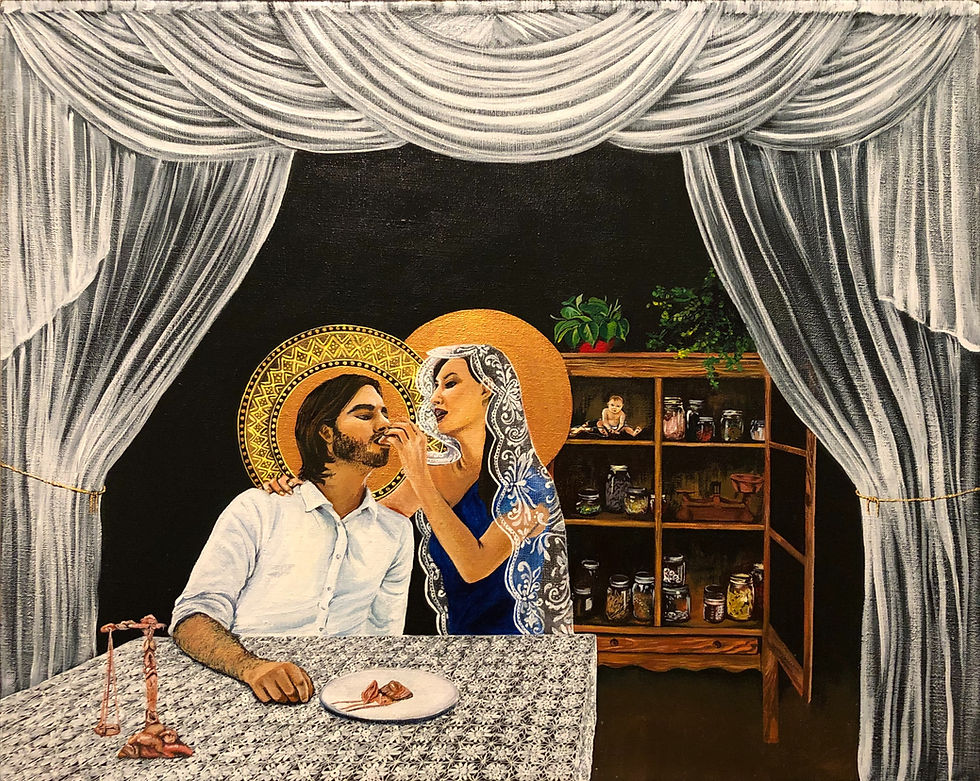The Machismo series is currently a work in progress.
These are the first pieces. Click on each for more information.
Through intense self-reflection, I discovered that many of my internal conflicts root in acute cognitive dissonance associated with subconscious sexist behaviors. I created this series to identify the whys and hows of those beliefs and begin dismantling the institutions and way of life that maintain them. The process started with a simple yet profound observation of Latin American family structures, traditions, and gender roles. The paintings represent machista relationships between male and female subjects according to factors such as gender roles, sexual orientation, age, race, religious affiliation, and historical events. Some pieces exhibit internal conflicts within a given individual. Substantial repetition communicates the absurdity, dangerousness, and collective imprisonment of maintaining machismo.
I encourage viewers to look closely at each work, the narrative being in the subtle yet poignant details. Because the viewer will approach the paintings with their own set of biases, I want them to reflect on any subtle or outright sexist beliefs and behaviors, and on the information they are passing down to younger generations. While doing this work, I’ve felt angry, but most importantly, I’ve been astounded by the type of treatment we accept as the norm. I’m holding women accountable for the propagation and maintenance of machismo instead of portraying them as mere victims of it. I aim to break apart Latin American cultural traditions from machista culture and to invite the possibility of a rich Latin American culture without machismo ideals. This series is my objection to what it currently means to be a woman in Latin America and an examination of the emotional and behavioral patterns that prevent a group of people from changing their circumstances.
As a Latin American woman, raised in the United States, I chose the topic of machismo because it is a constant encumbrance in my life and safety. In August 2018, the body of a young woman, raped and murdered, washed ashore in Costa Rica, and the media blamed her for what happened. According to the UN Gender Equality Observatory for Latin America and the Caribbean, 3,287 women were killed in 2018 by gender violence in Latin America. Provoked by this information, I decided to investigate the underlying motives behind machismo, its propagation, and maintenance for almost 500 years in Latin American culture.






